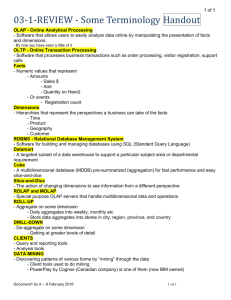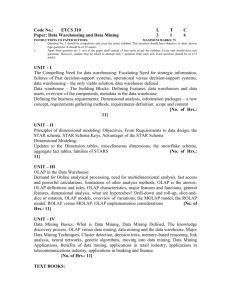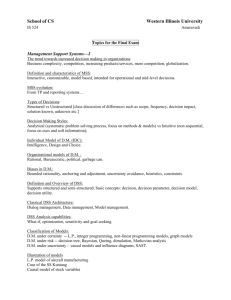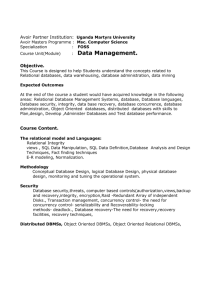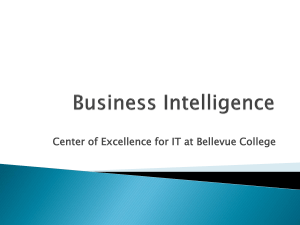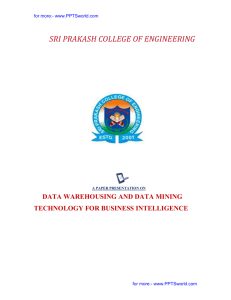File
advertisement
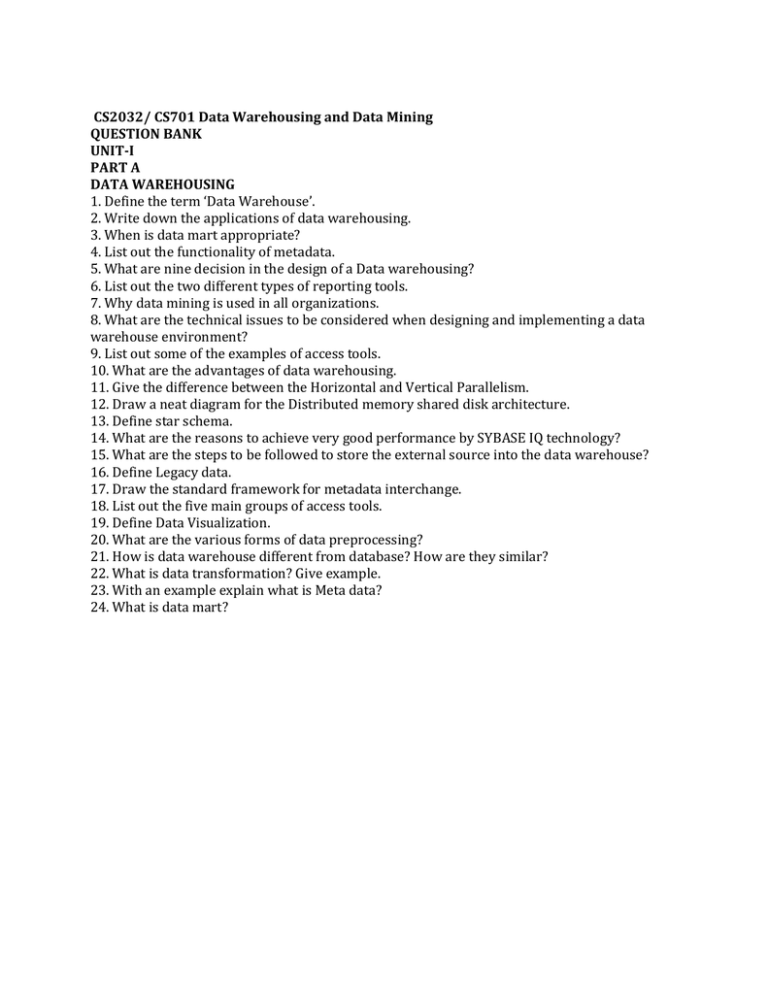
CS2032/ CS701 Data Warehousing and Data Mining QUESTION BANK UNIT-I PART A DATA WAREHOUSING 1. Define the term ‘Data Warehouse’. 2. Write down the applications of data warehousing. 3. When is data mart appropriate? 4. List out the functionality of metadata. 5. What are nine decision in the design of a Data warehousing? 6. List out the two different types of reporting tools. 7. Why data mining is used in all organizations. 8. What are the technical issues to be considered when designing and implementing a data warehouse environment? 9. List out some of the examples of access tools. 10. What are the advantages of data warehousing. 11. Give the difference between the Horizontal and Vertical Parallelism. 12. Draw a neat diagram for the Distributed memory shared disk architecture. 13. Define star schema. 14. What are the reasons to achieve very good performance by SYBASE IQ technology? 15. What are the steps to be followed to store the external source into the data warehouse? 16. Define Legacy data. 17. Draw the standard framework for metadata interchange. 18. List out the five main groups of access tools. 19. Define Data Visualization. 20. What are the various forms of data preprocessing? 21. How is data warehouse different from database? How are they similar? 22. What is data transformation? Give example. 23. With an example explain what is Meta data? 24. What is data mart? PART-B 1. Enumerate the building blocks of data warehouse. Explain the importance of metadata in a data warehouse environment. [16] 2. Explain various methods of data cleaning in detail [8] 3. Diagrammatically illustrate and discuss the data warehousing architecture with briefly explain components of data warehouse [16] 4. (i) Distinguish between Data warehousing and data mining. [8] (ii)Describe in detail about data extraction, cleanup [8] 5. Write short notes on (i)Transformation [8] (ii)Metadata [8] 6. List and discuss the steps involved in mapping the data warehouse to a multiprocessor architecture. [16] 7. Discuss in detail about Bitmapped Indexing [16] 8. Explain in detail about different Vendor Solutions. [16] UNIT-II BUSINESS ANALYSIS PART A 1. Difference between OLAP and OLTP. 2. Classify OLAP tools. 3. What is meant by OLAP? 4. Difference between OLAP & OLTP 5. Define Concept Hierarchy. 6. List out the five categories of decision support tools. 7. Define Cognos Impromptu 8. List out any 5 OLAP guidelines. 9. Distinguish between multidimensional and multi-relational OLAP. 10. Define ROLAP. 11. Draw a neat diagram for the web processing model. 12. Define MQE. 13. Draw a neat sketch for three-tired client/server architecture. 14. List out the applications that the organizations uses to build a query and reporting environment for the data warehouse. 15. Distinguish between window painter and data windows painter. 16. Define ADF, SGF and DEF. 17. What is the function of power play administrator? PART-B 1. Discuss the typical OLAP operations with an example. [6] 2. List and discuss the basic features that are provided by reporting and query tools used for business analysis. [16] 3. Describe in detail about Cognos Impromptu [16] 4. Explain about OLAP in detail. [16] 5. With relevant examples discuss multidimensional online analytical processing and multirelational online analytical processing. [16] 6. Discuss about the OLAP tools and the Internet [16] 7. (i)Explain Multidimensional Data model. [10] (ii)Discuss how computations can be performed efficiently on data cubes. [6] UNIT-III DATA MINING PART A 1. Define data. 2. State why the data preprocessing an important issue for data warehousing and data mining. 3. What is the need for discretization in data mining?. 4. What are the various forms of data preprocessing? 5. What is concept Hierarchy? Give an example. 6. What are the various forms of data preprocessing? 7. Mention the various tasks to be accomplished as part of data pre-processing. 8. Define Data Mining. 9. List out any four data mining tools. 10. What do data mining functionalities include? 11. Define patterns. PART-B (i) Explain the various [10] [6] 1. primitives for specifying Data mining Task. (ii) Describe the various descriptive statistical measures for data mining. 2. Discuss about different [16] types of data and functionalities. 3. (i)Describe in detail about [10] Interestingness of [6] patterns. (ii)Explain in detail about data mining task primitives. 4. (i)Discuss about different [6] 5. Issues of data mining. [10] [16] (ii)Explain in detail about 6. data preprocessing. How data mining system are classified? Discuss each classification with an example. How data mining system can be integrated with a data warehouse? Discuss with an example. [16]
